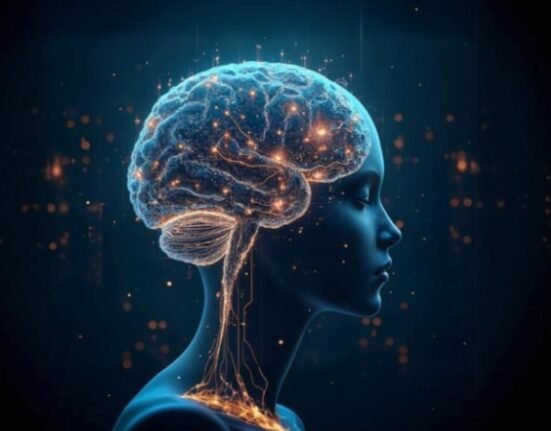Reena was 6 years old the first time she came to therapy. Her father and stepmother thought she should see a therapist because Reena had recently begun complaining about nightmares and severe body pain (with no physical injury) and had become very clingy. Reena’s behaviour varied a lot from session to session, she was sometimes aggressive, cursing to her family and not positive for me too. In one session she insisted her name was Meetu, and at the other times she sat quietly as if in her own world.
During one particular session, Reena had an aggressive tantrum, where she threw a whiteboard duster and vase on to me and ran out of the room. After sometime when she came back, quiet and shy, she asked me what happened to my arm and could not remember anything that has happened.
She was regularly coming for the sessions and after two months of therapy, I discovered that Reena had resumed contact with her biological mother, who had abandoned her at the age of 2. She has started visiting her biological mother’s house, her stepfather ‘s 10-year-old son secretly sexually abused her. She did not share with anybody and kept struggling on her own.
The above-explained Reena’s behaviour at different times & showing the presence of more than one distinct identity or personality is known as Dissociative identity disorder (DID)previously known as multiple personality disorder.
Dissociation is a disconnection between a person’s thoughts, memories, feelings, action, or sense of who he or she is. DID is associated with overwhelming experiences, traumatic events and/or abuse that occurred in childhood. Young children faced with severe sexual or physical abuse or neglect have no effective way of fighting or avoiding the offender.
To escape the painful reality, the only tool available during the abusive incident is that of dissociation. Separating the mind from physical experience provides a sense of protection. In addition, dissociation interferes with the process of memory encoding, so that sometimes there is little or no memory of the traumatic event.
Causes of Dissociative Identity disorder
A history of trauma is a key feature of dissociative identity disorder. About 90% of the cases of DID involve some history of abuse. The trauma often involves severe emotional, physical, and/or sexual abuse. It might also be linked to accidents, natural disasters, and war. An important early loss, such as the loss of a parent or prolonged periods of isolation due to illness, maybe a factor in developing DID.
Dissociation can serve as a defense mechanism against the physical and emotional pain of a traumatic or stressful experience. By dissociating painful memories from everyday thought processes, a person can use dissociation to maintain a relatively healthy level of functioning, as though the trauma had not occurred.
Episodes of DID can be triggered by a variety of real and symbolic traumas, including mild events such as being involved in a minor traffic accident, adult illness, or stress. Or a reminder of childhood abuse for a parent may be when their child reaches the same age at which the parent was abused.
Some traumatized children use dissociation to cope with stress in a wide variety of settings, including the classroom, playground & at home. Frequent dissociation of memories, emotion & thoughts interferes with normal functioning & results in socialization problems.
Often children are misdiagnosed with more common mental illnesses such as depression and ADHD, leading to incorrect treatment.
Symptoms of DID in children are as follows:-
- Daydreaming
- Dramatic changes in their preferences such as food, games, or clothes as well as changes in language, accent, or even voice or handwriting style.
- The child showing signs of having no memory of the previous day.
- The children with DID are having an imaginary friend. These friends seem very real to the child with a great deal of reality confusion & persistent impersonation.
- Severe headaches or pain in other parts of the body.
- Eating & sleeping disturbances.
- Amnesia or memory loss.
- Depression & mood swings
- Hallucination (false perception or sensory experiences such as hearing voices)
- Self-injurious behavior such as “cutting”.
Risk Factors and Suicide Risk
People who have experienced physical and sexual abuse in childhood are at increased risk of dissociative identity disorder. The vast majority of people who develop dissociative disorders have experienced repetitive, overwhelming trauma in childhood. Among people with dissociative identity disorder in the United States, Canada, and Europe, about 90 percent had been the victims of childhood abuse and neglect.
Suicide attempts and other self-injurious behavior are common among people with a dissociative identity disorder. More than 70 percent of outpatients with dissociative identity disorder have attempted suicide.
Treatment
Children with DID are easier to treat than adults & have higher recovery rates.
They can be treated by health care professionals through mostly with psycho-therapy such as hypnosis, art & play therapy.
Therapy can help people gain control over the dissociative process and symptoms. The goal of therapy is to help integrate the different elements of identity. Therapy may be intense and difficult as it involves remembering and coping with past traumatic experiences. Cognitive-behavioral therapy and dialectical behavioral therapy are two commonly used types of therapy. Hypnosis has also been found to be helpful in the treatment of dissociative identity disorder. Through these therapies, the child expresses the trauma when it is too difficult to express verbally.
There are no medications to directly treat the symptoms of dissociative identity disorder. However, medication may be helpful in treating related conditions or symptoms, such as the use of antidepressants to treat symptoms of depression.












Leave feedback about this